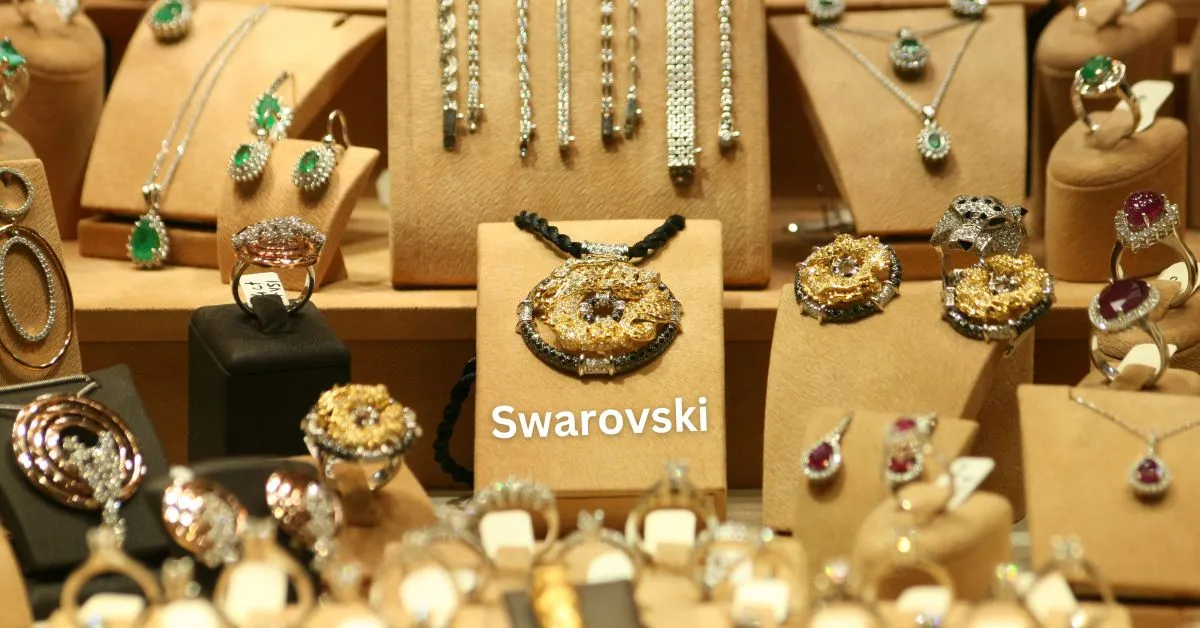Introduction
Swarovski, a name synonymous with luxury and innovation, has dazzled the world with its exquisite precision-cut crystals since its founding in 1895. This Austrian brand, established by Daniel Swarovski, has grown into a global leader in the luxury goods sector, offering a diverse range of products that include jewelry, home décor, and fashion accessories. But what sets Swarovski apart, and how has it maintained its status for over a century? This article explores the history, innovation, and future of Swarovski, with a focus on its impact on the luxury crystal industry.
The Origins of Swarovski
Daniel Swarovski, the visionary behind the brand, was born in northern Bohemia, now part of the Czech Republic. He came from a family of glass cutters, and from an early age, he was immersed in the art of glass-cutting. His passion and skill led him to invent an electric cutting machine that revolutionized crystal production. This innovation laid the foundation for what would become one of the most iconic brands in the world.
In 1895, Daniel Swarovski, along with his partners Armand Kosmann and Franz Weis, founded A. Kosmann D. Swarovski & Co. in Wattens, Tyrol, Austria. The location was strategic, as the region’s hydroelectric power provided the necessary energy for the demanding grinding processes. The company quickly gained a reputation for its high-quality crystals, which became the choice of royalty, celebrities, and discerning consumers worldwide.
The Expansion of Swarovski
Swarovski’s journey from a small crystal-cutting factory to a global luxury brand is a testament to its commitment to innovation and excellence. In the early 20th century, the company began to diversify its offerings. While it remained focused on jewelry and fashion accessories, it also ventured into other industries.
One of the most significant expansions was the creation of Swarovski Optik, a division dedicated to producing high-precision optical instruments. This move showcased the company’s versatility and technical expertise. Additionally, Swarovski expanded into the industrial sector with Tyrolit, a brand known for its high-quality grinding, cutting, and drilling tools.
Swarovski’s Product Range
Swarovski’s product range is as diverse as it is luxurious. The brand’s jewelry collection includes necklaces, bracelets, earrings, and rings, all of which showcase the brilliance of Swarovski crystals. Each piece reflects the brand’s dedication to craftsmanship and modern design.
In addition to jewelry, Swarovski offers a wide range of home décor items. These include intricately designed figurines, vases, and ornaments, all of which add a touch of elegance to any space. Swarovski’s chandeliers and lighting solutions are also highly sought after, known for their stunning beauty and innovative design.
The fashion industry has long embraced Swarovski crystals, with designers incorporating them into clothing, handbags, and shoes. These crystals add a touch of glamour and sophistication to any outfit, making them a favorite among designers and consumers alike.
Swarovski’s Impact on Fashion
Swarovski has played a significant role in the fashion industry, collaborating with top designers and brands to create unique, limited-edition collections. These collaborations have brought fresh and innovative designs to the market, appealing to a broad range of customers.
Swarovski crystals have also become a staple on the red carpet, adorning the gowns of celebrities at major events. Their versatility and brilliance make them the perfect choice for adding a touch of sparkle to any outfit. Whether it’s a delicate necklace or a crystal-studded gown, Swarovski crystals never fail to make a statement.
Sustainability and Corporate Responsibility
In recent years, Swarovski has intensified its focus on sustainability and corporate responsibility. The company has introduced multiple measures to lessen its impact on the environment. These include adopting energy-efficient manufacturing processes and sourcing raw materials sustainably.
Swarovski is also committed to promoting diversity and inclusivity within its workforce. The company supports various charitable causes and works to ensure that its business practices reflect its values of respect and integrity.
One of the most notable aspects of Swarovski’s sustainability efforts is its focus on reducing waste. The company has implemented a closed-loop manufacturing process, which minimizes waste by recycling and reusing materials. This approach not only reduces the company’s environmental footprint but also ensures that its products are made with the highest standards of quality and care.
Challenges and Controversies
Despite its illustrious history, Swarovski has faced its share of challenges and controversies. One of the most significant was its involvement during the Nazi era when some family members supported the regime. In recent years, Swarovski has taken steps to address this period, acknowledging its past and working to ensure that its current practices align with its values.
Swarovski has also faced challenges in adapting to the rapidly changing luxury market. With increasing competition from other luxury brands and the rise of digital shopping, the company has had to innovate and adapt to maintain its position as a leader in the industry.
Innovations and Future Directions
Under the artistic direction of Giovanna Battaglia Engelbert, Swarovski continues to push the boundaries of innovation. The brand has revisited and reinterpreted archival designs, blending traditional craftsmanship with contemporary aesthetics. This approach not only honors the company’s heritage but also appeals to modern consumers seeking unique and expressive fashion items.
Swarovski’s commitment to innovation extends beyond its product designs. The company is also exploring new ways to connect with consumers, including through digital platforms and immersive retail experiences. These efforts ensure that Swarovski remains relevant in the ever-evolving luxury market.
Conclusion
Swarovski’s journey from a small crystal-cutting factory in Austria to a global leader in luxury goods is a story of innovation, craftsmanship, and dedication to excellence. The brand’s ability to blend tradition with modernity has enabled it to continuously evolve while staying true to its core values.
Through its diverse range of products, strategic collaborations, and commitment to sustainability, Swarovski not only enhances the world of fashion and décor but also makes significant strides in environmental and social responsibility.As Swarovski moves forward, its dedication to innovation and quality guarantees its enduring presence in the luxury industry for many years ahead.





